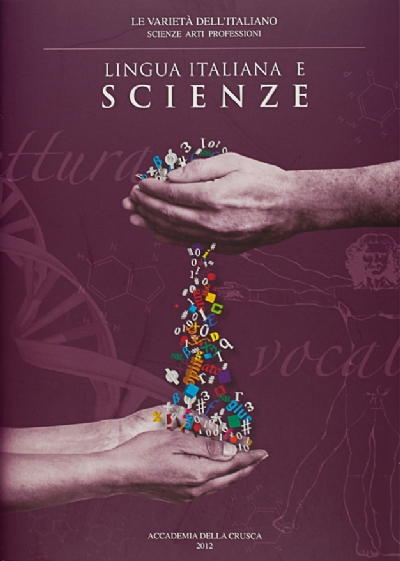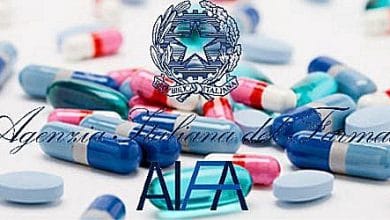
Why is the package leaflet of medicines called "leaflet"? A lot has to do with the tendency of pharmaceutical companies to hide the possible side effects of medicines, as the Accademia della Crusca explains.
 Crusca replies "The term liar, used to indicate the leaflet accompanying the drugs, is a semantically and morphologically transparent formation, based on the adjective liar with the diminutive suffix –ino, suitable both in reference to the size of the object and to mitigate the appellation of with a vein of irony liar. In this process we witness the transition from the adjective liar, referable only to man as an entity capable of conceiving and saying lies, to a noun which instead indicates an inanimate object containing a text, to be precise an informative text. Some clues could make us hypothesize that the name was born from a nominal use of the adjective liar: in Tuscany, to be precise in the Sienese area, the elderly remember that the liar was the poster of the newspapers displayed outside the newsstands and from here, by reducing the size of the sheet, it was perhaps possible to come to name liar the medicine leaflet. There is another connection, this time documented, to the journalism field: in the book by G. Gelati, Speak Livorno (Ugo Bastogi Editore, 1992) is the voiceliar defined as follows: "During fascism the newspaper «Il Telegrafo» was called by the anti-fascists and was said to be the property of the Ciano family". However, we do not have any data that can confirm the link between these formations which, on the same basis as liar, may have had distinct paths.
Crusca replies "The term liar, used to indicate the leaflet accompanying the drugs, is a semantically and morphologically transparent formation, based on the adjective liar with the diminutive suffix –ino, suitable both in reference to the size of the object and to mitigate the appellation of with a vein of irony liar. In this process we witness the transition from the adjective liar, referable only to man as an entity capable of conceiving and saying lies, to a noun which instead indicates an inanimate object containing a text, to be precise an informative text. Some clues could make us hypothesize that the name was born from a nominal use of the adjective liar: in Tuscany, to be precise in the Sienese area, the elderly remember that the liar was the poster of the newspapers displayed outside the newsstands and from here, by reducing the size of the sheet, it was perhaps possible to come to name liar the medicine leaflet. There is another connection, this time documented, to the journalism field: in the book by G. Gelati, Speak Livorno (Ugo Bastogi Editore, 1992) is the voiceliar defined as follows: "During fascism the newspaper «Il Telegrafo» was called by the anti-fascists and was said to be the property of the Ciano family". However, we do not have any data that can confirm the link between these formations which, on the same basis as liar, may have had distinct paths.
 If these remain only hypotheses, there is no doubt instead that this name wants to focus attention on the prerogatives of these particular "instructions for use" which, especially in the boom years of pharmacology, tended to overlook the defects and unwanted effects of the drug to enhance its merits and efficacy. Therefore, those that could be read were not real "lies", but overall the leaflet was a "leaflet" that told small lies or, better, omitted important information that could be compromising for the product. In recent years, thanks to legislative restrictions that have imposed stricter rules for compiling package inserts and also thanks to greater attention from consumers in taking medicines, we have perhaps come to obtain that they are reported on the liar all the important news about the drug. Currently the most widespread criticism is that these tools, aimed at consumers and therefore at non-specialists, remain incomprehensible even to a careful and scrupulous reading, both for the technical nature of the information they offer and for the accumulation of news in such a small space. The non-transmission of information due to the quality and quantity of the indications (not making people understand is almost like not saying), continues to justify the appellation of liar.
If these remain only hypotheses, there is no doubt instead that this name wants to focus attention on the prerogatives of these particular "instructions for use" which, especially in the boom years of pharmacology, tended to overlook the defects and unwanted effects of the drug to enhance its merits and efficacy. Therefore, those that could be read were not real "lies", but overall the leaflet was a "leaflet" that told small lies or, better, omitted important information that could be compromising for the product. In recent years, thanks to legislative restrictions that have imposed stricter rules for compiling package inserts and also thanks to greater attention from consumers in taking medicines, we have perhaps come to obtain that they are reported on the liar all the important news about the drug. Currently the most widespread criticism is that these tools, aimed at consumers and therefore at non-specialists, remain incomprehensible even to a careful and scrupulous reading, both for the technical nature of the information they offer and for the accumulation of news in such a small space. The non-transmission of information due to the quality and quantity of the indications (not making people understand is almost like not saying), continues to justify the appellation of liar.
As regards the sphere in which the term may have originated, we have some clues thanks to a research by the MIUR aimed at investigating "The language of the cities": from the investigations carried out in 9 cities on twelve informants for each city it appears that the term is not as well known and widespread as one might think and that the coinage sector would appear to be the medical-hospital sector, therefore a playful para-slang voice, favorably received by the ordinary citizen who, backed by the authority of the doctor, has no difficulty in reusing it and spread it. The technical name of leaflet as well as being longer and more difficult, it lacks the ironic coloring that makes terms such as liar; we can find other examples of similar procedures in the medical field where often a "familiar" appellation is preferred to the name of unusual, unknown and difficult to access diseases, which then becomes the common and widespread way to indicate them (thanks also to the abuse made of it by the media): an example for all the notorious mad cow to indicate thebovine spongiform encephalopathy.
 From the survey mentioned above, the word is not too common in spoken language, but it will be enough to do a quick search on the net to find many written attestations also on the official sites of the regional ASLs: this wide circulation in the mass media has perhaps sanctioned the recognition of the word liar which was first recorded as a neologism in the Annals of the Italian Contemporary Lexicon.Neologisms 1993-94 (edited by Michele A. Cortelazzo, Padua, Esedra, 1995) and then in the most recent Vocabolari dell'uso, the DISC (Dizionario Italian Sabatini-Coletti, Florence, Giunti, 1997) and the GRADIT (Great Dictionary of Italian for Use by Tullio De Mauro, Turin, UTET, 1999-2000).
From the survey mentioned above, the word is not too common in spoken language, but it will be enough to do a quick search on the net to find many written attestations also on the official sites of the regional ASLs: this wide circulation in the mass media has perhaps sanctioned the recognition of the word liar which was first recorded as a neologism in the Annals of the Italian Contemporary Lexicon.Neologisms 1993-94 (edited by Michele A. Cortelazzo, Padua, Esedra, 1995) and then in the most recent Vocabolari dell'uso, the DISC (Dizionario Italian Sabatini-Coletti, Florence, Giunti, 1997) and the GRADIT (Great Dictionary of Italian for Use by Tullio De Mauro, Turin, UTET, 1999-2000).
Another sign of the success and total lack of technicality of this appellation is its extension in other areas to indicate different objects: these are uses certified in the press or on the Internet, of more or less recent diffusion, but which certainly have not taken root as instead happened for the primary meaning. On the site of an Italian science fiction magazine (www.delos.fantascienza.com) I found named liar the text contained in the back cover of a book: from the context - which I quote - "whoever wrote the leaflet on the back cover had probably only read the first pages of the book" it can be deduced that those who chose to use this term wanted to highlight the scarce truthfulness of the description provided to readers. Edoardo Raspelli in the pages of the «Tuttolibri» insert of the newspaper «La Stampa» callsliar the hotel brochure, also in this case not without a little controversy.
The areas of use of liar they are therefore various and different, but the constant that seems to characterize the choice of this appellation is that of being attributed to illustrative texts (leaflets of medicines, back covers and leaflets) which are believed to hide, more or less covertly, some deception».





